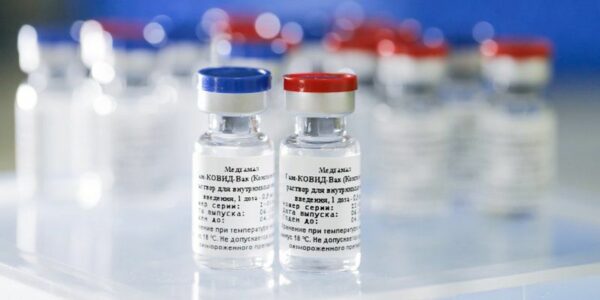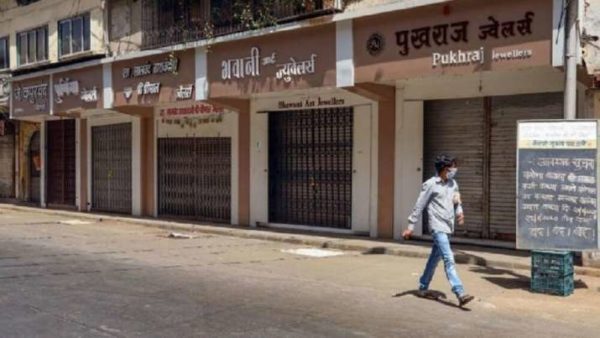Sputnik V Becomes Third Covid Vaccine Approved in India

Russia’s Sputnik V is the third coronavirus vaccine approved for use in India amid a deadly second wave of infections.
The Russian vaccine has been deemed to be safe, and works in a way similar to the Oxford-AstraZeneca vaccine which is being made in India as Covishield.
Sputnik V gives around 92% protection against Covid-19, late stage trial results published in The Lancet reveal.
India has so far given more than 100 million doses of two approved vaccines – Covishield and Covaxin.
Sputnik V’s approval came on a day when India overtook Brazil to become the country with the second-highest number of cases globally.
With the total case tally of more than 13.5 million cases, India is now only behind the US which has reported more than 31 million cases. With 13.4 million cases, Brazil is now at number three.
The Indian government aims to vaccinate 250 million “priority people” by the end of July. But experts say that the pace of vaccination has been slow and unless the drive is scaled up, the target could be missed.
Sputnik V, developed by Moscow’s Gamaleya Institute, initially generated some controversy after being rolled out before the final trial data had been released.
But scientists say its benefits have now been demonstrated.
The vaccine uses a cold-type virus, engineered to be harmless, as a carrier to deliver a small fragment of the coronavirus to the body.
Safely exposing the body to a part of the virus’s genetic code in this way allows it to recognize the threat and learn to fight it off, without the risk of becoming ill.
After being vaccinated, the body starts to produce antibodies especially tailored to the coronavirus.
This means that the immune system is primed to fight coronavirus when it encounters it for real.
Sputnik V can be stored at temperatures of between 2 and 8C degrees (a standard fridge is roughly 3-5C degrees) making it easier to transport and store.
The Russian Direct Investment Fund (RDIF), which is marketing the vaccine, has signed deals to produce more than 750 million doses of Sputnik V in India with six domestic vaccine makers, according to reports.
Unlike other similar vaccines, the Sputnik shot uses two slightly different versions of the vaccine for the first and the second dose – given 21 days apart.
They both target the coronavirus’s distinctive “spike”, but use different vectors – the neutralized virus that carries the spike to the body.
The idea is that using two different formulas boosts the immune system even more than using the same version twice – and may give longer-lasting protection.
As well as proving effective, it was also safe with no serious reactions linked to the vaccine during the trial.
Some side-effects to a vaccine are expected, but these are usually mild, including a sore arm, tiredness and a bit of a temperature. There were no deaths or serious illnesses in the vaccinated group linked to the jab.
India Becomes Fastest Country to Administer 100 Million Covid Vaccine Doses
Coronavirus: India in Total Lockdown for 21 Days
Coronavirus: India Observes 14-Hour Janata Curfew to Combat Pandemic
As well as Russia, Sputnik V is being used in a number of other places, including Argentina, Palestinian territories, Venezuela, Hungary, UAE and Iran.
It will be weeks before Sputnik will be rolled out in India and until then, the country has to make do with Covaxin and Covishield.
Covaxin is an inactivated vaccine which means that it is made up of killed coronaviruses, making it safe to be injected into the body.
Bharat Biotech, a 24-year-old vaccine maker with a portfolio of 16 vaccines and exports to 123 countries, used a sample of the coronavirus, isolated by India’s National Institute of Virology.
When administered, immune cells can still recognize the dead virus, prompting the immune system to make antibodies against the pandemic virus.
The two doses are given four weeks apart. The vaccine can be stored at 2C to 8C.
The vaccine has an efficacy rate of 81%, preliminary data from its phase 3 trial shows.
India’s regulators gave the vaccine an emergency approval in January while the third phase of the trial was still underway, sparking skepticism and questions from experts.
Bharat Biotech says it has a stockpile of 20 million doses of Covaxin, and is aiming to make 700 million doses out of its four facilities in two cities by the end of the year.
The Oxford-AstraZeneca vaccine is being manufactured locally by the Serum Institute of India, the world’s largest vaccine manufacturer. It says it is producing more than 60 million doses a month.
The vaccine is made from a weakened version of a common cold virus (known as an adenovirus) from chimpanzees. It has been modified to look more like coronavirus – although it can’t cause illness.
When the vaccine is injected into a patient, it prompts the immune system to start making antibodies and primes it to attack any coronavirus infection.
The shot is administered in two doses given between four and 12 weeks apart. It can be safely stored at temperatures of 2C to 8C and can easily be delivered in existing health care settings such as doctors’ surgeries.
The vaccine developed by Pfizer-BioNTech, which is currently being administered in several countries, must be stored at -70C and can only be moved a limited number of times – a particular challenge in India, where summer temperatures can reach 50C.
International clinical trials of the Oxford-AstraZeneca vaccine showed that when people were given a half dose and then a full dose, effectiveness hit 90%.
But there was not enough clear data to approve the half-dose, full-dose idea.
However, unpublished data suggests that leaving a longer gap between the first and second doses increases the overall effectiveness of the jab – in a sub-group given the vaccine this way it was found to be 70% effective after the first dose.


